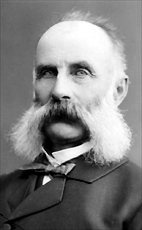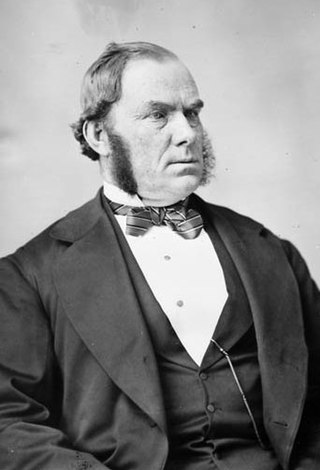Charlevoix was a federal electoral district in Quebec, Canada, that was represented in the House of Commons of Canada from 1867 to 1917 and from 1949 to 2004.
Annapolis was a federal electoral district in Nova Scotia, Canada, that was represented in the House of Commons of Canada from 1867 to 1917. The district was created in the British North America Act, 1867. It was abolished in 1914 when it was redistributed into Digby and Annapolis. It consisted of Annapolis County, Nova Scotia.
Antigonish was a federal electoral district in Nova Scotia, Canada, that was represented in the House of Commons of Canada from 1867 to 1917. It was created in the British North America Act, 1867. The federal riding was dissolved in 1914 into the riding of Antigonish—Guysborough. It consisted of the County of Antigonish.
Cape Breton was a federal electoral district in Nova Scotia, Canada, that was represented in the House of Commons of Canada from 1867 to 1904. It was created as part of the British North America Act, 1867.
Colchester was a federal electoral district in Nova Scotia, Canada, that was represented in the House of Commons of Canada from 1867 to 1935. It was created in the British North America Act, 1867, and was abolished in 1933 when it was merged into Colchester—Hants riding. The district consisted of the County of Colchester.
Cumberland was a federal electoral district in Nova Scotia, Canada, that was represented in the House of Commons of Canada from 1867 to 1968. It was created in the British North America Act, 1867, and was abolished in 1966 when it was merged into Cumberland—Colchester North riding. The district consisted of the County of Cumberland.
Digby was a federal electoral district in Nova Scotia, Canada, that was represented in the House of Commons of Canada from 1867 to 1917. It was created as part of the British North America Act, 1867, and was abolished in 1914 when it was redistributed into Digby and Annapolis and Yarmouth and Clare ridings.
Hants was a federal electoral district in Nova Scotia, Canada, that was represented in the House of Commons of Canada from 1867 to 1925. It was created in the British North America Act, 1867, and abolished in 1924 when it was merged into Hants—Kings riding. It consisted of Hants County.
Lunenburg was a federal electoral district in Nova Scotia, Canada, that was represented in the House of Commons of Canada from 1867 to 1925 and from 1949 to 1953. Its boundary was that of Lunenburg County, Nova Scotia.
Pictou was a federal electoral district in Nova Scotia, Canada, that was represented in the House of Commons of Canada from 1867 to 1968. It was created in the British North America Act of 1867. It consisted of the County of Pictou. It was abolished in 1966 when it was merged into the riding of Central Nova. It returned two members from 1872 to 1903.
Queens was a federal electoral district in the province of Nova Scotia, Canada, that was represented in the House of Commons of Canada from 1867 to 1896. It was created by the British North America Act, 1867. It consisted of the County of Queen's. It was abolished in 1892 when it was merged into Shelburne and Queen's riding.
Yarmouth was a federal electoral district in Nova Scotia, Canada, that was represented in the House of Commons of Canada from 1867 to 1917. It was created by the British North America Act, 1867. It consisted of the County of Yarmouth. It was abolished in 1914 when it was merged into Yarmouth and Clare riding.
Richmond was a federal electoral district in the province of Nova Scotia, Canada, that was represented in the House of Commons of Canada from 1867 to 1917. It was created by the British North America Act, 1867. It consisted of the County of Richmond. A law to abolish the riding was passed to merge it with Cape Breton South into Cape Breton South and Richmond in 1914. This was duly carried out when the first elections were held with new boundaries and the new name in 1917.
Shelburne was a federal electoral district in the province of Nova Scotia, Canada, that was represented in the House of Commons of Canada from 1867 to 1896.
Victoria was a federal electoral district in Nova Scotia, Canada, that was represented in the House of Commons of Canada from 1867 to 1904. It was created by the British North America Act, 1867. It consisted of the County of Victoria. It was abolished in 1903 when it was merged into North Cape Breton and Victoria electoral district.
Rouville was a federal electoral district in Quebec, Canada, that was represented in the House of Commons of Canada from 1867 to 1917.
Two Mountains was a federal electoral district in Quebec, Canada, that was represented in the House of Commons of Canada from 1867 to 1917.
Stewart Campbell was a Canadian lawyer and politician and a member of the Anti-Confederation Party.

William Hallett Ray was a Canadian politician, farmer, and merchant.

William Ross was a Canadian politician.

